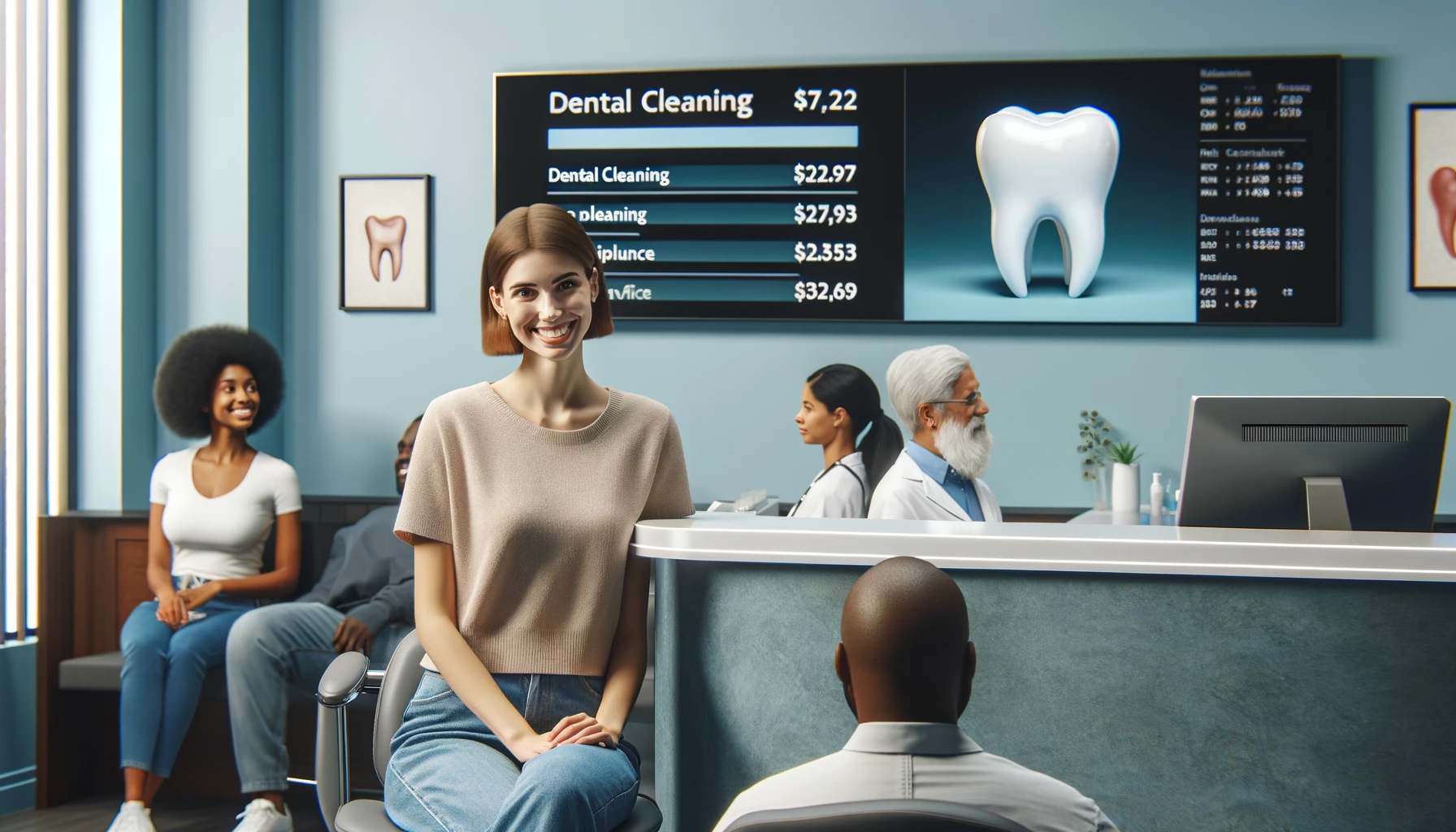How Much Does a Dental Cleaning Cost Without Insurance in 2025?
Maintaining dental health is integral to overall well-being, but the financial aspect of dental care, particularly for those without insurance, can be a significant barrier. As we move into 2025, understanding the costs associated with dental cleanings and exploring affordable options is more important than ever.
The Financial Burden of Dental Care
The expense of dental cleanings for individuals without insurance can be a substantial deterrent. In 2022, the American Dental Association (ADA) reported that approximately 12.7% of people avoided dental services due to cost. This financial challenge often leads to delays in necessary care, potentially resulting in more serious and costly health complications over time. For a standard dental cleaning, individuals can expect to pay between $100 and $250 per visit.
Key Factors Influencing Dental Cleaning Costs
Several elements can significantly impact the cost of dental cleanings. Being aware of these factors helps individuals make informed decisions and potentially find more affordable options :
- Location: Dental costs often vary depending on location . Urban areas, with their higher operational expenses, tend to have higher prices compared to rural locations .
- Type of Cleaning: The specific type of cleaning needed will influence the cost . A routine cleaning, designed for individuals with healthy gums and minimal plaque buildup, is typically less expensive than a deep cleaning .
- Dentist’s Experience: More experienced dentists may charge higher fees for their services .
- Clinic Amenities: High-end dental clinics with advanced technologies and luxurious amenities may also have higher prices.
Understanding Deep Cleaning Costs
Deep cleaning, also known as scaling and root planing, is a more intensive procedure aimed at treating gum disease by removing plaque and tartar from below the gum line. The cost for deep cleaning can vary based on the severity of the condition and the number of quadrants treated.
| Procedure | Description | Estimated Cost |
|---|---|---|
| Scaling and Root Planing | A deep cleaning treatment that clears away plaque, tartar, and bacteria from beneath the gums while smoothing the tooth roots to help your gums heal. | $200 – $300 per quadrant |
| Full Mouth Scaling and Root Planing | This full-mouth treatment is usually suggested for patients with moderate to severe gum disease, targeting all four quadrants. | $700 – $1,400 for full mouth |
| Follow-Up Maintenance | Ongoing cleanings every 3 to 4 months help keep gum disease from coming back and ensure your gums stay healthy after the procedure. | $100 – $250 per visit |
Navigating Affordable Dental Care Options
For individuals without dental insurance, finding affordable dental care is crucial. Here are several strategies to consider:
- Community Dental Clinics: These clinics often offer services at reduced rates, with fees based on income. They are typically funded by government and non-profit organizations.
- Dental Schools: Dental schools provide lower-cost services performed by students under the supervision of experienced faculty.
- Discount Dental Plans: These plans offer reduced rates at participating clinics for an annual fee.
- In-Office Membership Plans: Many dental offices now offer in-house membership plans that provide discounts on various services, including cleanings. These plans often require a monthly or annual fee and can provide significant savings.
- Negotiating with Dentists: Discussing your financial situation with your dentist may lead to discounts or flexible payment plans. Many dental offices are willing to work with patients to make care more accessible.
Policy Changes and Personal Initiatives
Improving access to affordable dental care requires a multifaceted approach involving both policy changes and personal responsibility. Policy interventions include expanding public insurance programs, providing subsidies to offset costs for uninsured individuals, and increasing funding for community dental clinics. On a personal level, individuals can explore affordable care options, stay informed about dental health, and advocate for accessible care within their communities.
The Role of Teledentistry
Another emerging solution for affordable dental care is teledentistry. Teledentistry involves using technology to provide remote dental consultations and services. This approach can reduce costs by minimizing the need for in-person visits and allowing dentists to serve more patients efficiently. Teledentistry platforms can also offer educational resources and guidance on preventive care, helping individuals maintain better oral health and potentially avoid costly treatments.
The Future of Dental Care Costs
Predicting the exact cost of dental cleanings in 2025 is challenging due to various economic factors. However, staying informed, exploring all available options, and proactively managing dental health can help mitigate potential cost increases .
Conclusion
Accessing affordable dental care is essential for maintaining overall health. By understanding the factors that influence the cost of dental cleanings and exploring available resources, individuals can take proactive steps to ensure they receive the care they need . Combining personal initiatives with advocacy for policy changes can pave the way for a more accessible and equitable dental care landscape in 2025 and beyond.
What is the average cost of a dental cleaning without insurance in the U.S.?
The average cost typically ranges from $90 to $120, but this can vary based on location, the type of cleaning, and the dentist’s experience.
Are there any affordable alternatives to dental insurance for cleanings?
Yes, alternatives include dental discount plans, visiting dental schools for low-cost services, utilizing online deals, and attending community health events offering affordable dental care.
How can location affect the cost of dental cleanings?
Urban areas and major cities often have higher dental cleaning costs due to increased living expenses and overhead costs, compared to rural areas.
What additional costs can be expected during a dental cleaning visit?
Additional costs can include treatments for plaque and tartar build-up, comprehensive exams for new patients, and procedures like deep cleaning if required.
Can negotiating with my dentist help reduce the cost of a dental cleaning?
Yes, many dentists are open to negotiation, especially for regular patients, those who can pay upfront, or those who commit to multiple appointments.






